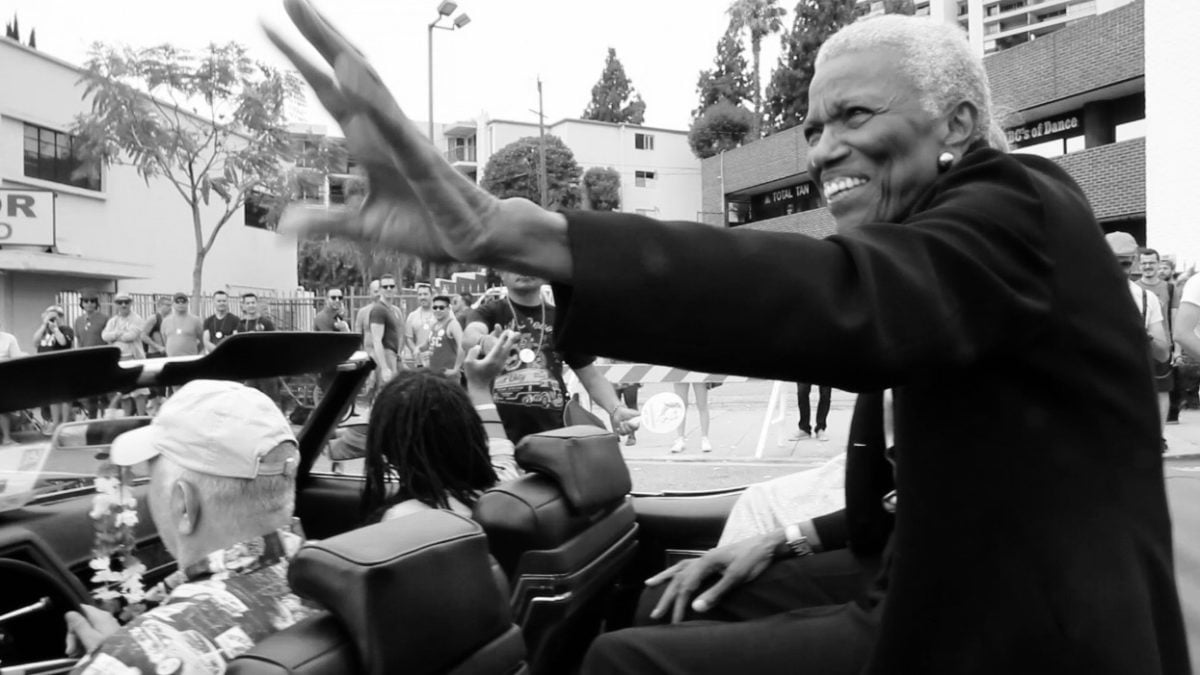Jewel’s Catch One was a pioneering and landmark nightclub — It was the first and longest running gay-black disco in Los Angeles.
For more than 40 years, Jewel’s Catch One, located in Arlington Heights on West Pico Boulevard near Crenshaw Boulevard, was a safe haven for anyone who felt marginalized or discriminated against.
It became the favorite space for African American gay men, who made the nightclub the epicenter of their lives.
Jewel Thais-Williams
On Saturday, Los Angeles City Council President Herb Wesson dedicated the intersection of Pico Boulevard and Norton Avenue in front of the Jewel’s Catch One as Jewel Thais-Williams Square. It will be named for the pioneering business woman who owned and operated the club more than four decades.
Thais-Williams adopted the phrase “catch one” because it was a popular expression in the African-American gay community — Finding a new friend or love interest.
Jewel’s Catch One
Director C. Fitz understood the rich cultural and historical significance of Jewel’s Catch One and Thais-Williams and made the 2016 documentary “Jewel’s Catch One.”
“It was important for me to make the documentary because Catch One and Jewel helped changed minds and history over the course of four decades,” Fitz said.
“It was more than a nightclub, it was a place where music, fashion, and freedom blossomed. It was a safe space and home for many who had been rejected by society,” she said. “And it was a safe space with rich music history.”

Jewel Thais-Williams waves to the crowd along Santa Monica Boulevard watching the L.A. Pride Parade in June 2016. Thais-Williams was one of the parade’s grand marshals. Photo: C. Fitz.
Historic nightclub
Jewel’s Catch One was born from the ashes of discrimination.
In the early 1970s, various West Hollywood nightclubs in West Hollywood had refused entrance to Thais-Williams because she was a black lesbian.
As a result, Thais-Williams opened Jewel’s Catch One in 1973.
At the time, it was groundbreaking for a black woman to own and operate a nightclub. Under California law at the time, it was illegal for women to tend bar.
At first, the bar’s customers were old white guys during the day and blue collar black workers at night. Three years later, by 1975, the clientele became gay black men.
Before Stonewall, the Black Cat in Silver Lake had LGBTQ protest
Popular nightclub
As her nightclub grew more and more popular, it became known as the “unofficial Studio 54 of the West Coast,” and Thais-Williams was known as a role model on how to fight discrimination and shatter barriers across racial, social, and cultural lines.
The Catch One also was popular with the glitterati, hosting performances and celebrities, including Sylvester, Rick James, Gloria Gaynor, Janet Jackson, Chaka Kahn, Sheryl Lee Ralph, Donna Summer, Tina Turner, and Luther Vandross.
Jewel sold the Catch One in 2015. A live music venue, the club was called Union until owner Mitch Edelson changed the name back to Catch One in 2018.
Inspiring documentary
Fitz hopes viewers see her documentary as an inspiration to do something to help their community.
“The film can be viewed as a history lesson on so many subjects, but most importantly I would love viewers to gain inspiration to do more in their own backyard,” Fitz said. “If we each do a little more for our neighbor, extend our hand, or show up for our community maybe we can create some healing in this country.”
